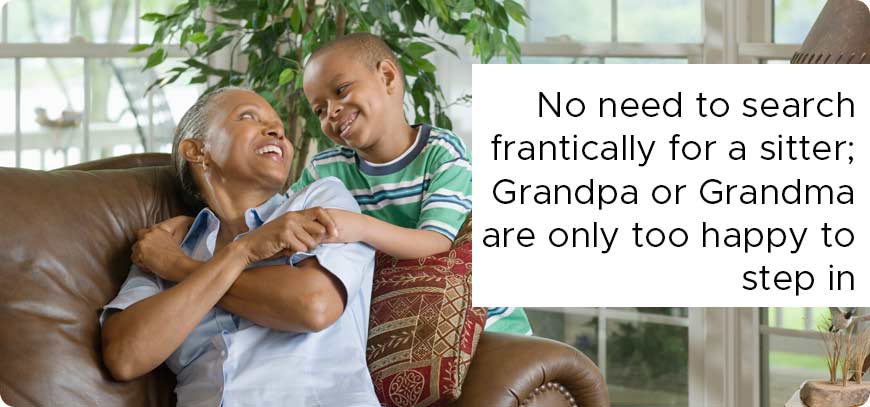Advantages of Multigenerational Homes
If you’re considering multigenerational living, you’re not alone. Far from being a passing trend, this living option has existed since the 1950s and it has been steadily on the rise for the last few decades.
According to the U.S. Census Bureau, real multigenerational living is defined as any arrangement in which more than two generations live together under the same roof. This can mean a single parent moving home with his or her own parents, or an older couple living with their children to ensure their care. The appeal of this arrangement is becoming increasingly universal to all.
If you’re considering a multigenerational home, there are many factors to keep in mind.
Sharing Expenses
The costs of homeownership are significant. But individual mortgage payments are lower when this expense is shared among a group. Different family members can also help out paying grocery bills, property taxes, utilities, and maintenance, making these costs less burdensome for all.
This financial benefit makes multigenerational living an ideal arrangement for a young couple who needs to save for a downpayment or build a good credit score in order to eventually purchase their own home. Along the same lines, nursing home and in-home care costs are significant and can be greatly reduced by housing the elderly relative(s) in a multigenerational home.
Another significant financial advantage exists if you are seeking financing for your home. Having each other means more income and assets, improving your chances of getting your loan approved.
Strengthening Family Relationships
By spending time together every day, family members can build a strong and rewarding bond of attachment. Grandparents enjoy feeling more useful and involved in the lives of their children and grandchildren. Their grandchildren also benefit by having the example and attention of their grandparents, which helps them create some beautiful childhood memories. The older generation is able to impart important values to grandchildren that their parents might be too busy or stressed to provide.
In addition, as they age, grandparents do not have to struggle with the feelings of loneliness that often plague older generations. The reason is pure and simple: They are able to remain in constant connection with their loved ones. It’s just like old times.

Sharing Chores
With several adults of different ages and abilities living together, it’s easy to divvy up responsibilities so that everyone pulls their weight. Older children can help with things like mowing the lawn or shoveling snow while grandparents can take on some of the less physically challenging tasks. You can also take turns cooking, vacuuming, and washing dishes. Even very small children can be taught to do simple tasks like putting away toys or even preparing a simple snack. This teaches them the value of hard work. A fair and equal distribution of household chores means that these tasks don’t become burdensome to anyone, and ensures that everyone gets what they need.
Beefing Up Home Security
It can be a great worry when an aging loved one lives alone. You always have the nagging fear that he or she might have a fall or some other accident with no one around to help. Sharing living space makes this scary scenario less likely to happen.
In addition, with members of the family at home during the workday, you can enjoy an added layer of security against burglaries. And this is especially important considering that most burglaries occur in empty houses while occupants are at work, according to statistics.
Another bonus is that sharing housing can make it easier to find a beautiful and comfortable place to live in an enticing environment.
Childcare
Finding good childcare has always been a daunting task for young parents and the recent Covid-19 pandemic has made it even more challenging. Even if you do find a good childcare provider, it represents a significant expense.
It can make a huge difference when parents don’t have to worry about childcare on days when they get held up late at the office or on a Friday evening when they want to enjoy a low-stress ”date night”. No need to search frantically for a sitter; Grandpa or Grandma are only too happy to step in.

While it’s clear that many benefits to multigenerational homes exist, there are a few potential drawbacks.
Fortunately, most of these disadvantages can be offset by the right design for your living space.
Lack of Privacy
Moving in with your aging parents or your adult children is a big life change which can require some getting used to. One of the most difficult aspects of multigenerational living can be the loss of privacy. For most people, it can be overwhelming to think of having a family member at our shoulder every time we turn around, no matter how much we love them. Fortunately, homes designed with separate bathrooms and bedrooms allow a necessary degree of privacy and solitude for each family member. Separate kitchens can provide a sense of independence without compromising togetherness.
Noise
There’s no way around it; children are noisy. You don’t want to have to constantly shush them or restrict their activities. And yet older adults who are no longer accustomed to the noise level may find it difficult to adjust.
But this potential drawback can be mitigated with a dedicated play space for young children where they can enjoy noisy activities without bothering other family members. Of course, it’s also helpful to establish times for loud play and stick to those boundaries.
In addition, you may want to consider separate entrances to reduce disruptive noise from late arrivals or early departures in the home.
Optimum Design For Multigenerational Homes
Every family is unique, and so each will have different needs when it comes to multigenerational living. But in general, homes with wide hallways and doors, open floor plans, and plenty of storage space lend themselves well to this arrangement. In our Multigenerational Brochure, we have highlighted two home plans with these features.
Before planning your move, it’s essential to talk with all family members about their needs and expectations. Develop clear norms regarding household chores, finances, and privacy before moving in together in order to head off problems down the road. You want to ensure that you can be a “good neighbor” to your family members.
Thoughtful, future-oriented thinking is another important aspect of successful multigenerational living. Renovations and updates may be necessary in the future to ensure that seniors can remain comfortable in the home as they age. As children get older, some rooms may be converted from one purpose to another.
With careful planning and design, you and your family can enjoy all the benefits that multigenerational homes have to offer.
Comments are closed.


